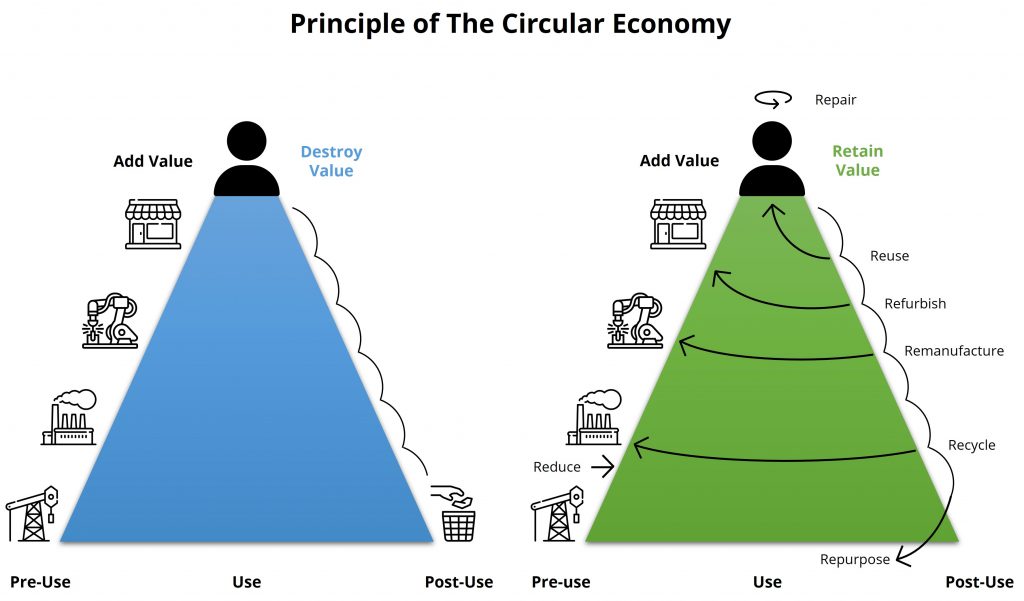Circular Economy Introduction
What is The Circular Economy?
The Circular Economy (CE) is an innovative approach to production and consumption that aims to minimize waste, extend the lifecycle of materials, and promote sustainable resource use. Unlike the traditional linear model of “take, make, dispose,” CE focuses on designing products for longevity, reusing materials, and regenerating natural systems. By implementing circular strategies—reduce, reuse, repair, repurpose, recycle, refurbish, remanufacture—businesses and communities can reduce environmental impact, drive economic efficiency, and foster long-term sustainability. This transition is essential for tackling global challenges like resource scarcity, climate change, and waste management while creating new opportunities for innovation and value creation.

What are Circular Economy Business Models?
Circular Economy Business Models (CEBMs) redefine the way businesses create and capture value by integrating circular principles into their operations. Unlike traditional linear models, CEBMs focus on extending product lifecycles, reducing waste, and maximizing resource efficiency. These models take on one or multiple circular strategies, enabling them to generate economic value while minimizing environmental impact.
To provide an overview of what CEBMs can look like, we have collected various CE use cases in the European Danube Region. This catalogue presents all CEBMs in a standardised format, offering comparable information on every case. This is supposed to help understand the core concept and content of the business model. Additionally, artifacts created using the DECIDE Toolbox are also provided as references.


